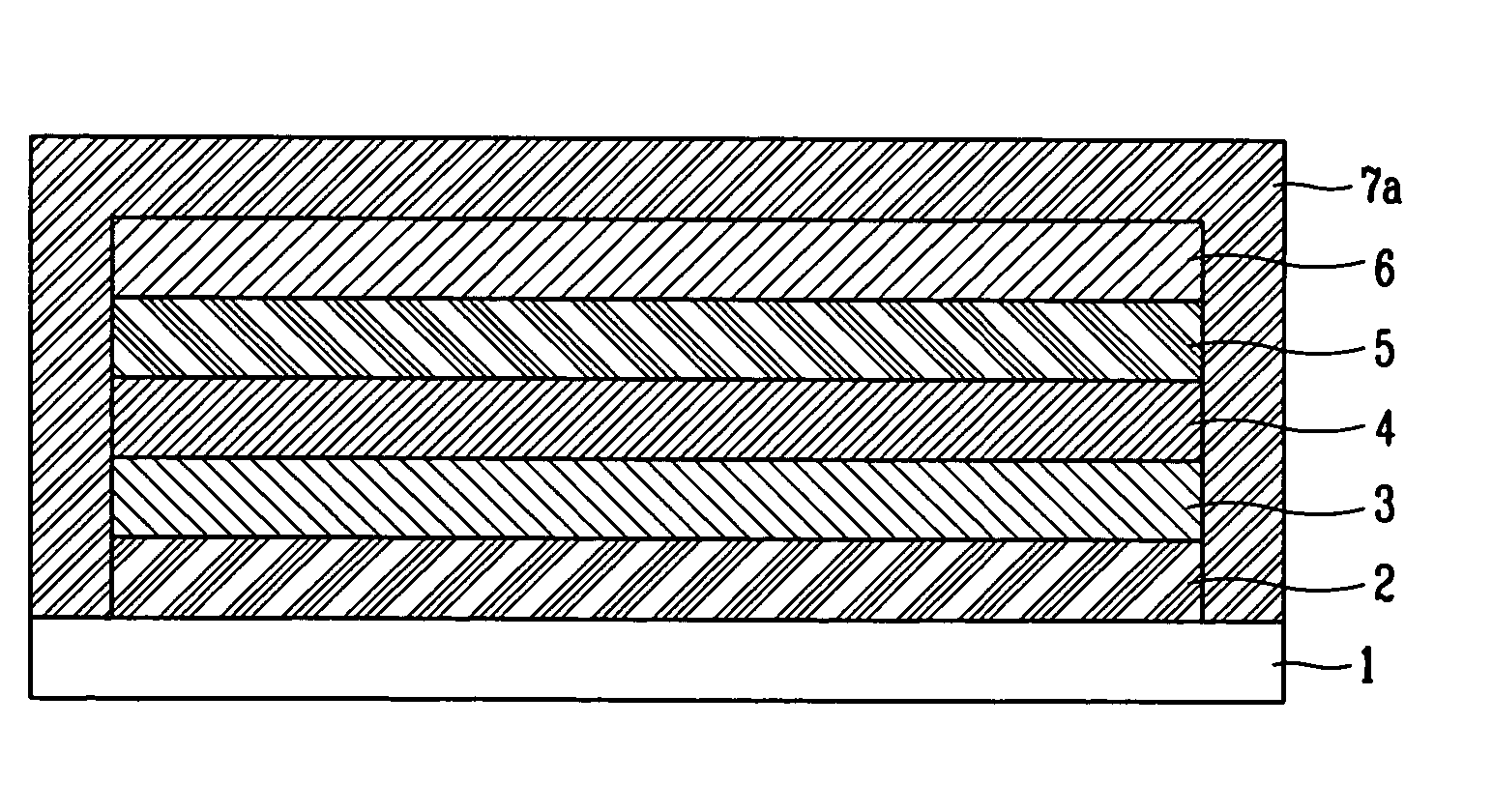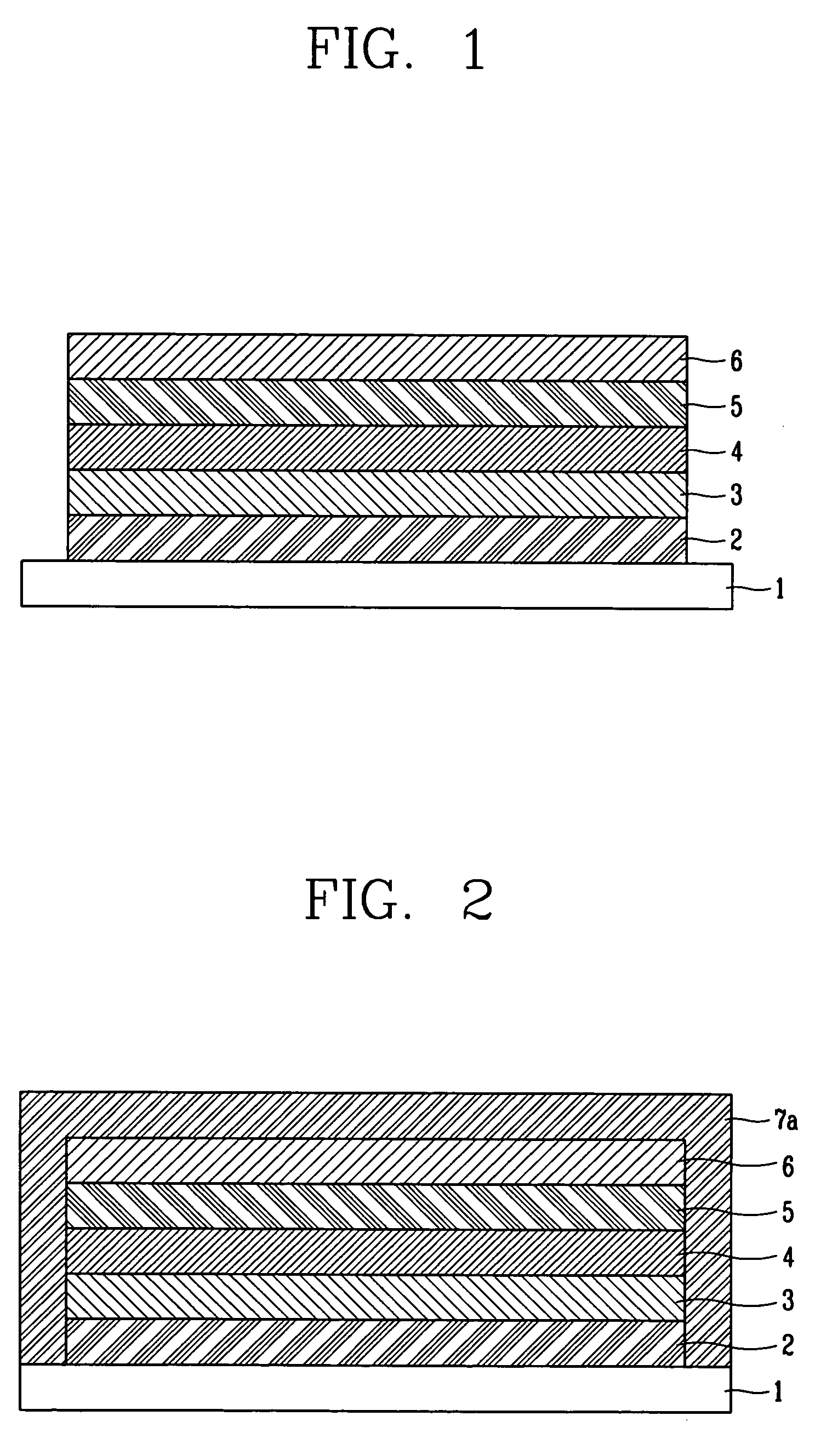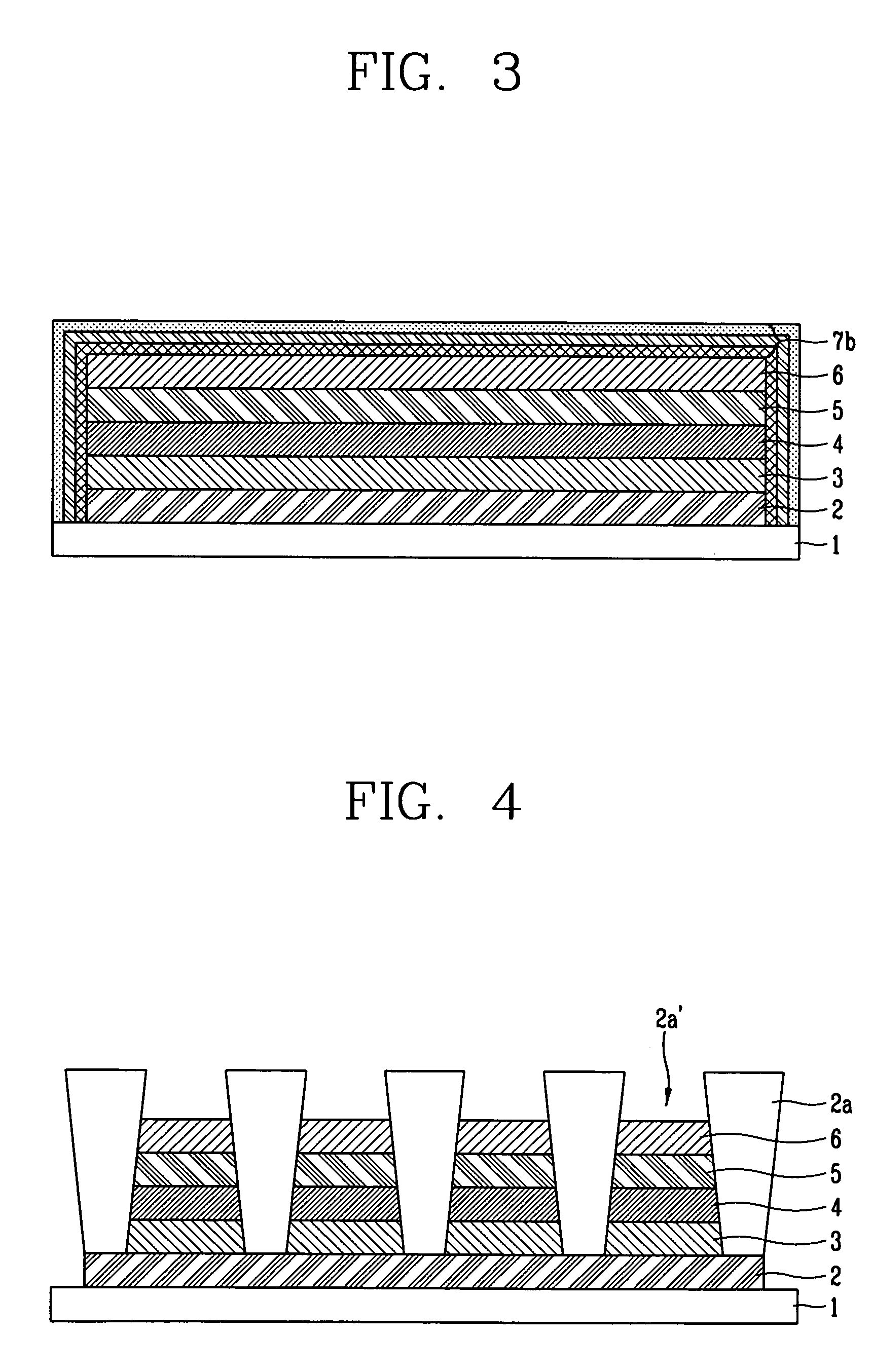Inorganic thin layer, organic electroluminescence device including the same, and fabrication method thereof
- Summary
- Abstract
- Description
- Claims
- Application Information
AI Technical Summary
Benefits of technology
Problems solved by technology
Method used
Image
Examples
Embodiment Construction
[0049] Reference will now be made in detail to the preferred embodiments of the present invention, examples of which are illustrated in the accompanying drawings.
[0050] An inorganic thin layer passivation layer, an organic electroluminescence device including the same, and a fabrication method thereof in accordance with the preferred embodiments of the present invention will now be described in detail with reference to the accompanying drawings. These drawings or embodiments are not intended to be limiting, but explaining the present invention.
[0051]FIG. 1 is a cross-sectional diagram illustrating a general organic electroluminescence device. An ITO is deposited on a glass or plastic substrate 1 by RF-sputtering, and patterned to form an anode electrode 2. An organic layer comprised of a hole injection layer 3, a hole transfer layer 4, a light emitting layer and an electron transfer layer 5 is deposited on the anode electrode 2. Here, thermal evaporation can be used. AlLi alloy ha...
PUM
 Login to View More
Login to View More Abstract
Description
Claims
Application Information
 Login to View More
Login to View More - R&D
- Intellectual Property
- Life Sciences
- Materials
- Tech Scout
- Unparalleled Data Quality
- Higher Quality Content
- 60% Fewer Hallucinations
Browse by: Latest US Patents, China's latest patents, Technical Efficacy Thesaurus, Application Domain, Technology Topic, Popular Technical Reports.
© 2025 PatSnap. All rights reserved.Legal|Privacy policy|Modern Slavery Act Transparency Statement|Sitemap|About US| Contact US: help@patsnap.com



